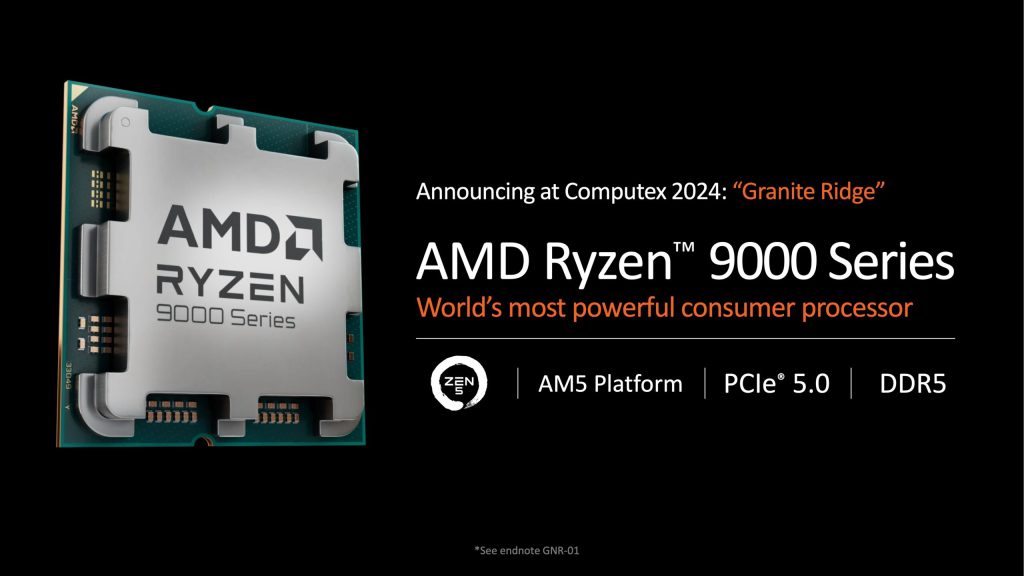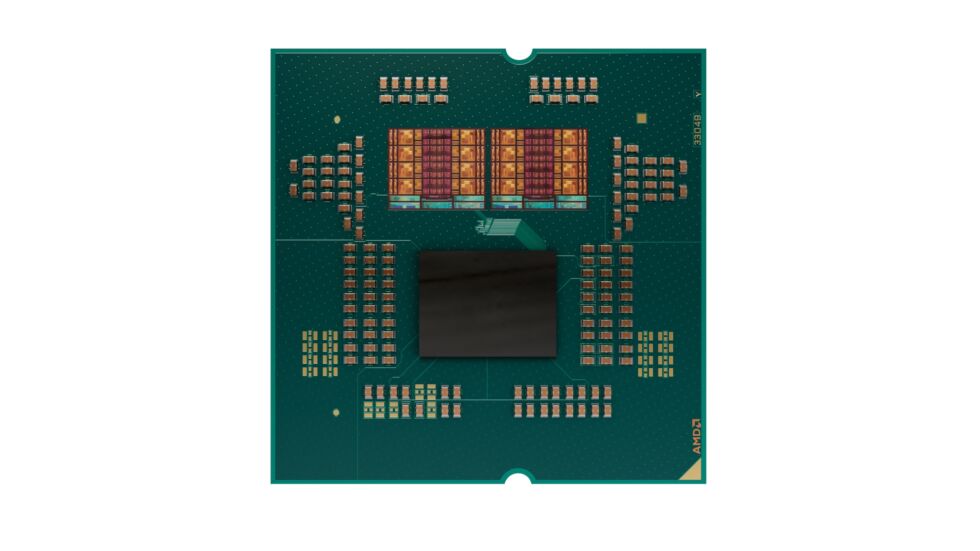But AMD says AM4 will hang around for budget PCs well into 2025.

It’s been almost two years since AMD introduced its Ryzen 7000 series desktop CPUs and the Zen 4 CPU architecture. Today, AMD is announcing the first concrete details about their successors. The Ryzen 9000 CPUs begin shipping in July.
At a high level, the Ryzen 9000 series and Zen 5 architecture offer mostly incremental improvements over Ryzen 7000 (Ryzen 8000 on the desktop is used exclusively for Zen 4-based G-series CPUs with more powerful integrated GPUs). AMD says that Zen 5 is roughly 16 percent faster than Zen 4 at the same clock speeds, depending on the workload—certainly not nothing, and there are some workloads that perform much better. But that number is far short of the 29 percent jump between Zen 3 and Zen 4.
AMD and Intel have both compensated for mild single-core performance improvements in the past by adding more cores, but Ryzen 9000 doesn’t do that. From the 9600X to the 9950X, the chips offer between 6 and 16 full-size Zen 5 cores, the same as every desktop lineup since Zen 2 and the Ryzen 3000 series. De-lidded shots of the processors indicate that they’re still using a total of two or three separate chiplets: one or two CPU chiplets with up to 8 cores each, and a separate I/O die to handle connectivity. The CPU chiplets are manufactured on a TSMC N4 process, an upgrade from the 5nm process used for Ryzen 7000, while the I/O die is still made with a 6nm TSMC process.

These chips include no Zen 5c E-cores, as older rumors suggested. Zen 5c is a version of Zen 5 that is optimized to take up less space in a silicon die, at the expense of higher clock speeds; Zen 5c cores are making their debut in the Ryzen AI 300-series laptop chips AMD also announced today. Boosting the number of E-cores has helped Intel match and surpass AMD’s multi-core performance, though Ryzen’s power consumption and efficiency have both outdone Intel’s throughout the 12th-, 13th-, and 14th-generation Core product cycles. Apple also uses a mix of P-cores and E-cores in its high-end desktop CPU designs.
ADVERTISINGAdvertisement
Ryzen 9000 doesn’t include any kind of neural processing unit (NPU), nor does AMD mention whether the Ryzen 7000’s RDNA 2-based integrated GPU has been upgraded or improved.
AMD is also announcing new X870 and X870E motherboard chipsets to accompany the new processors; as with the X670, the E-series chipset is actually a pair of chipsets on the same motherboard, boosting the number of available USB ports, M.2 slots, and PCIe slots.
The only real improvement here seems to be that all X870-series boards support USB4 and higher EXPO memory overclocking speeds by default. The chipsets also support PCIe 5.0 speeds for the main PCIe slot and M.2 slot, though the X670 chipsets already did this.
The processors’ power requirements aren’t changing, so users with 600-series motherboards ought to be able to use Ryzen 9000 CPUs with little to no performance penalty following a BIOS update.
- AMD plans to keep the AM4 socket around as a budget platform until at least 2025, according to this slide. AMD
- To that end, it’s announcing a couple more riffs on the old Zen 3-based Ryzen 5000 series, to entice budget builders and upgraders. Pricing hasn’t been announced. AMD

Ryzen 9000 doesn’t seem likely to resolve the biggest issues with the AM5 platform, namely the high costs relative to current-gen Intel systems, the high cost relative to AM4-based systems today, and even the high cost relative to AM4-based systems at the same point in the AM4 socket’s lifespan. Motherboards remain more expensive, DDR5 memory remains more expensive, and there are still no AM5 processors available for significantly less than $200.
According to AMD’s own timeline, it plans to keep the AM4 socket around until at least 2025. AM4 is still a surprisingly decent budget platform given that the socket was introduced eight years ago, and AMD does, in fact, continue to trickle out new Ryzen 5000-series CPUs to give buyers and upgrades more options. But it still means that system builders either need to choose between an expensive platform that has a future or a cheaper platform that’s more or less a dead end.
Listing image by AMD




